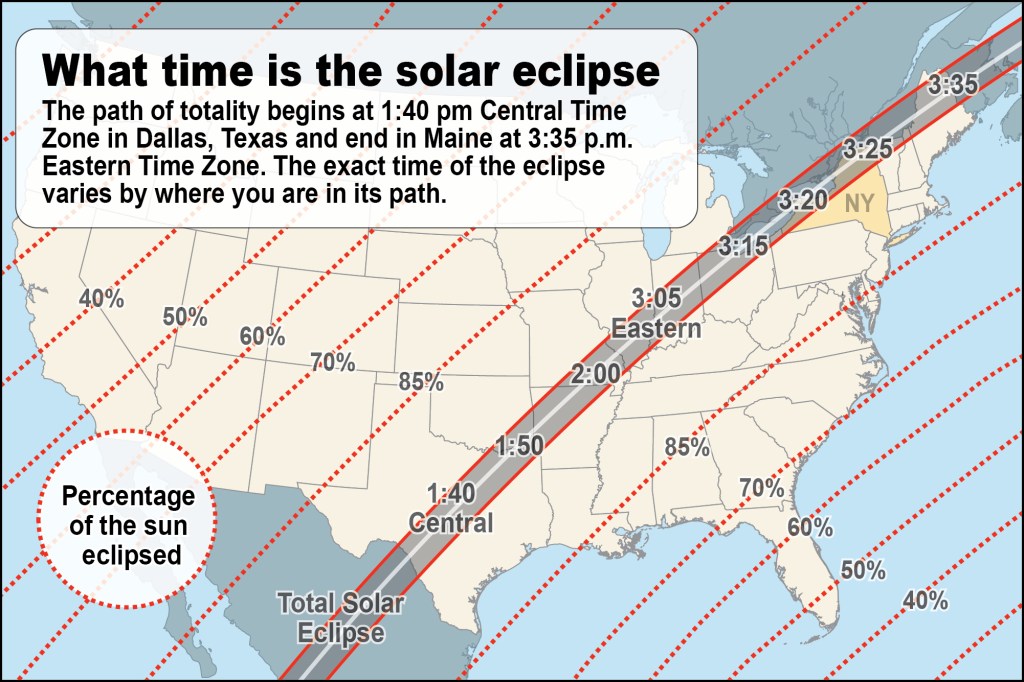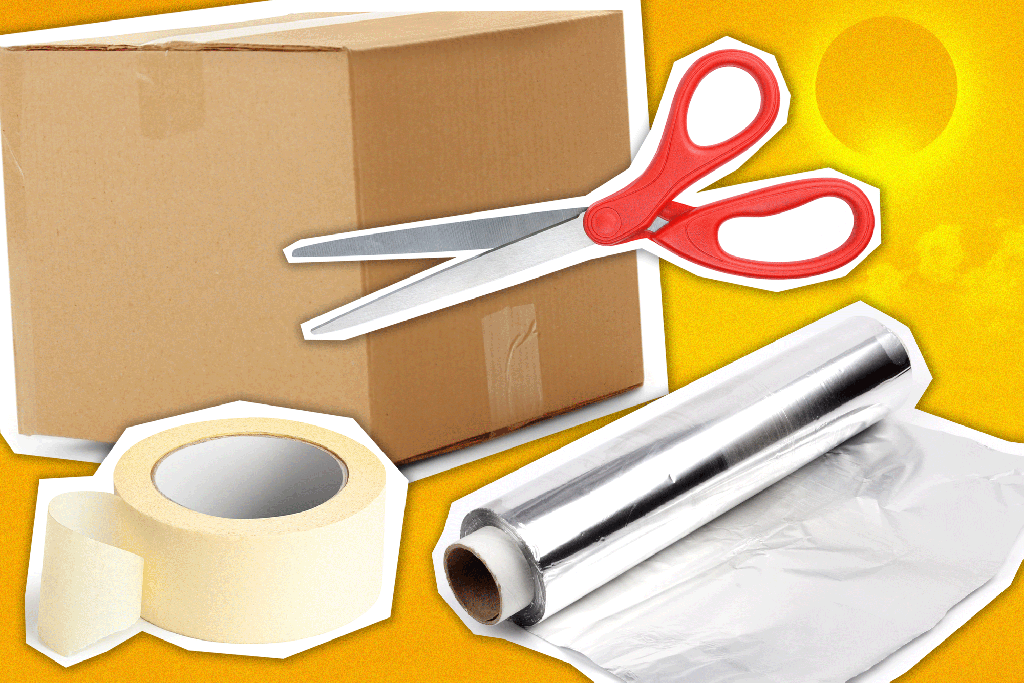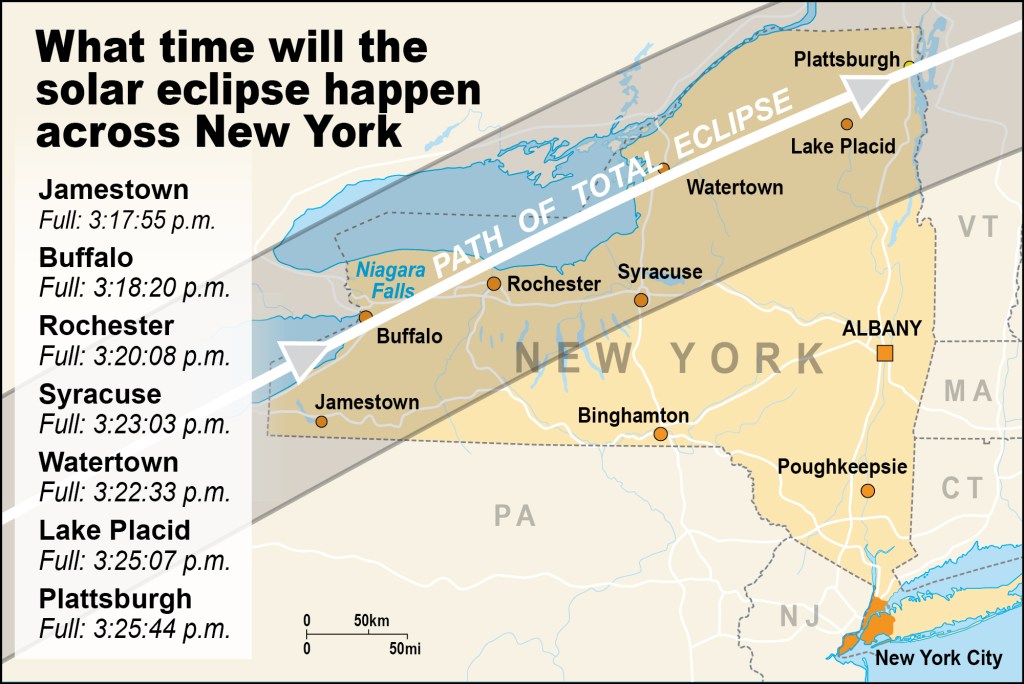Can you make DIY solar eclipse glasses?
A total solar eclipse will fly across North America on April 8 — and it won’t happen again for another 20 years, says NASA.
You may not want to miss it, but staring at the sun for even just a few seconds can blind you or cause lasting eye damage.
The only time one can safely stare at the eclipse is when it’s completely covered by the moon. Although, even if most of the sun is covered by the moon and there is just a bit of light peeking through, it’s more than enough of the sun to damage your vision.
And be warned, unless it has a solar filter, looking at the eclipse through a camera lens or binoculars won’t keep you any safer than looking with your own eyes.
“Viewing any part of the bright sun through a camera lens, binoculars, or a telescope without a special-purpose solar filter secured over the front of the optics will instantly cause severe eye injury,” NASA said on its website.
Luckily, there’s a way to view the eclipse safely, with a pair of special eclipse glasses, though NASA said they don’t approve of any particular brand of solar viewer. They warned people that normal sunglasses are not safe for eclipse viewing “no matter how dark” they are.
Everything to know about the 2024 solar eclipse
- The solar eclipse will take place Monday, April 8, blocking the sun for over 180 million people in its path.
- The eclipse will expand from Mexico’s Pacific Coast across North America, hitting 15 US states and pulling itself all the way to the coast of Newfoundland, Canada.
- New Yorkers will experience the solar eclipse just after 2 p.m. Monday.
- A huge explosion on the sun, known as a coronal mass ejection, is anticipated, according to experts. This happens when massive particles from the sun are hurled out into space, explains Ryan French of the National Solar Observatory in Boulder, Colorado.
- To avoid serious injury to the eyes, it is necessary to view the event through proper eyewear like eclipse glasses, or a handheld solar viewer, during the partial eclipse phase before and after totality.
- The next total solar eclipse will take place on Aug. 12, 2026, and totality will be visible to those in Greenland, Iceland, Spain, Russia and a small slice of Portugal.
“Safe solar viewers are thousands of times darker and ought to comply with the ISO 12312-2 international standard,” NASA said.
They urged people to check their eclipse glasses or handheld viewers for tears scratches, or any signs of damage. The American Astronomical Society published a press release warning people to be on the lookout for counterfeit glasses and provided a list of brands that meet the safety requirements.
NASA didn’t say anywhere on their website that people should attempt to make their own solar glasses.
Instead, if people can’t get their hands on eclipse specs, NASA said they can use an “indirect viewing method, which does not involve looking directly at the sun.” They recommended people make a pinhole projector, which has a small opening that projects an image of the sun onto a nearby surface.
“Do NOT look at the sun through the pinhole!” NASA warned.
NASA said people can build their own pinhole projector with common household items.
Live Science shared a step-by-step how-to guide on how to create a homemade eclipse viewer.
Your materials
Grab yourself a cardboard box, like a shoebox, for example, a white sheet of paper, tape, a pin, aluminum foil and a box cutter.
Cut a hole
Use the box cutter to make a one-inch hole on one side of the shoe box, close to the top.
Grab your foil
Take some tinfoil and tape it over the hole you made in the cardboard box.
Punch a hole
Grab the pin and punch a hole through the center of the foil.
Make a paper screen
Tape some white paper inside the box on the side directly across from the hole. This is your DIY projection screen where you’ll be able to see the sun shining through the hole
Create your viewing hole
You never want to look at the sun through the pinhole, as this can damage your eyes. Instead, you’ll cut a hole on the side next to the white piece of paper so that you can view the eclipse on your homemade screen.
Watch
You can test your homemade viewer by taking it outside during the day. With your back to the sun, make sure the viewer is lined up with its own shadow.
Now look through the hole you cut on the side of the box and look for a circle of light on the white paper.
During the eclipse, you’ll see a shadow pass over the point of light.












